

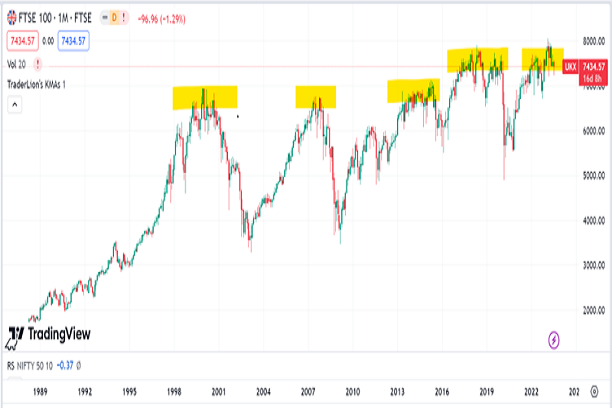
Source- TradingView
"Everything should be made as simple as possible, but not simpler."
– Albert Einstein
Buy and Hold Index Investing is one of the popular passive investment strategies for long term investment in the market.
Its appeal lies in its simplicity to offer long term investment growth while providing for diversification. It is driven by a belief in market efficiency that assumes that it is difficult to continuously outperform the market.
If we take a look at the long-term graphs of some of the major stock market indices – such as S&P 500, Swiss Market Index, Nifty 50 – they demonstrate a sustained upward trend over the long term and the Index Investing strategy seems like a plausible strategy in these scenarios.
However, let us examine if this strategy for long term investing can be applied to any markets at any given time. Below are the graphs of some of the indices-
This is a graph of S&P 500 since 1982 till date (15/07/2023).
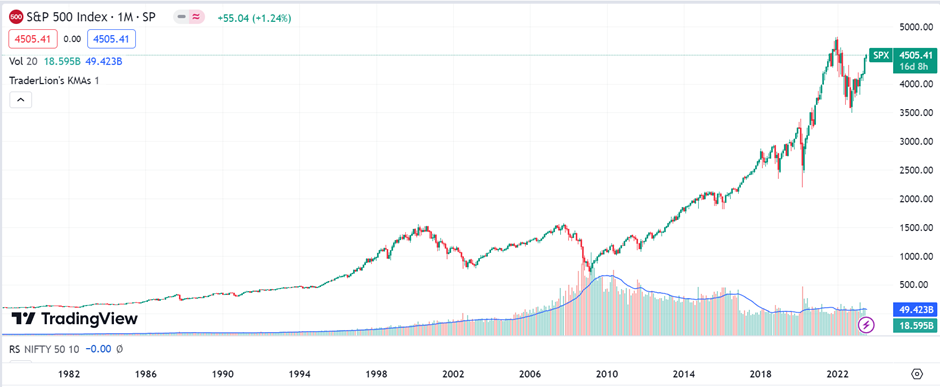
Source- TradingView
We can see here that the trend is an everlasting uptrend and one could believe to benefit from it in the long run even with the rough downsides throughout history.
That said, if we take note of certain prolonged down cycles in the S&P 500, we will witness long term trend of losses. For example, from 1999 to 2009, the S&P 500 had given a CAGR of -4.83% and an absolute loss of -39% Please refer to the table below-

What if the retirement goals or any other long-term goals falls in those 10 years?
Here is a graph of Nifty 50 Index from the year 1991 till date (15/07/2023)
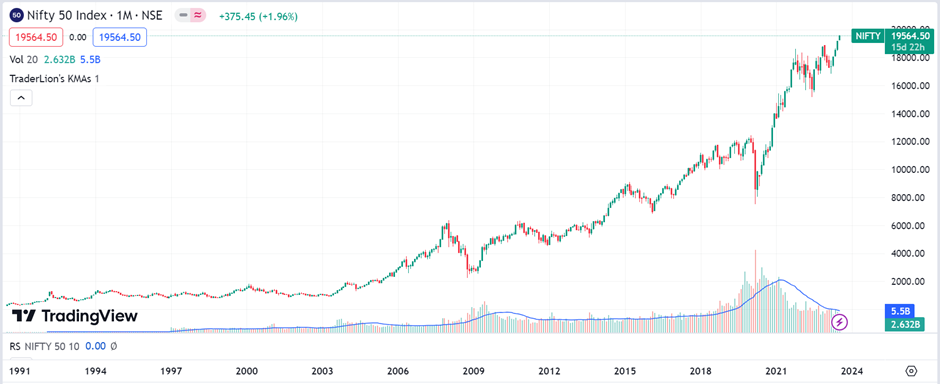
Source- TradingView
We can see the clear long term uptrend here as well but if we look at the Nifty 50 from 2007 to 2013, the index has given negative returns for 6 years. Details in the table below-

This is the graph of Swiss Market Index since inception till date (15/07/2023)

Source- TradingView
Same upward trend is visible here too but here again you will notice a 20-year slow growth.
From 2007-2018 (until the value crossed the 2007 high), the Index gave a CAGR Of 0.33%. Please refer to the table below-

Now, here we introduce a few more graphs of some of the indices that are exceptions to the Index Investing strategy-
Below is the graph of the Japan Index, Nikkei 225, since 1982 till date (15/07/2023)
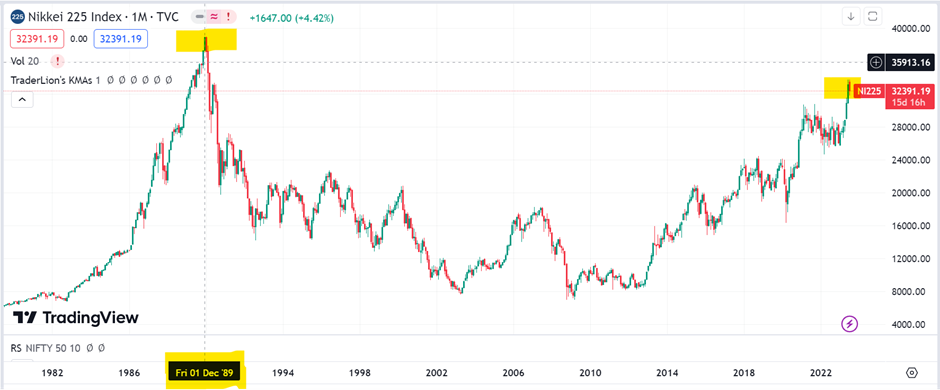
Source- TradingView
We will notice here that the Index value reached its peak in 1989 and it’s been 34 years since then but the ’89 high has never been crossed.
The long term ‘Buy and Hold’ strategy might have worked until the 1989 high after which holding on to it longer would only be detrimental to one’s portfolio.
Here, is another graph of the top 100 companies traded on the London Stock Exchange- The Footsie Index (FTSE 100 Index).

Source- TradingView
Notice here that it’s a stagnant growth with this Index. After reaching a price point the market pulls back. This has happened multiple times until a new peak reaches just slightly higher than the old one and then it is down cycle again.
From 2000 to 2012 (for a period of 10 years), the Index growth was as follows-
.png)
Below is the graph of Singapore STI Index since inception till date (15/07/2023)
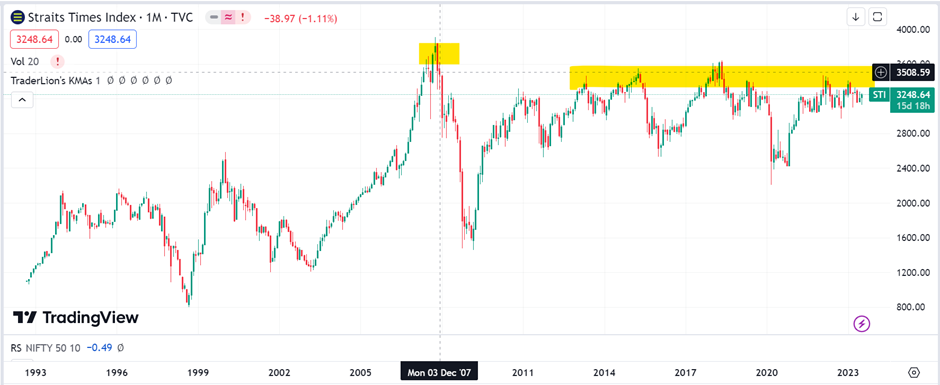
Source- TradingView
Observe the resistance faced by the Index post the 2007 high.
Consequently, this shows that Index Investing is not an infallible strategy and oversimplifying its use for all indices at all times might not produce the desirable results (sometimes for as long as 33 years).
Note by – Priyanka Bohra V
Future Corp Capital
15 July 2023
Disclaimer: The data/information compilation in this article is the Author’s comment on general trends in the securities market and discussions of broad-based indices. The information/data provided here is not a research report as defined under the Securities and Exchange Board of India (Research Analysts) Regulations, 2014 (SEBI RA Regulation, 2014). Thus, the Author is not required to have registration as a Research Analyst under the SEBI RA Regulation, 2014.
The information/data provided in this article is from publicly available data, and appropriate references have been given, which we believe are reliable. While reasonable endeavours have been made to present reliable data related to current and historical information, the Author does not guarantee the accuracy or completeness of the data/ information in this article. Accordingly, the Author or any of his connected persons, including his associates or employees, shall not be in any way responsible for any loss or damage that may arise to any person from any inadvertent error in the information/data contained, views and opinions expressed in this article.
The information/data provided in the article is purely for information purposes and to disseminate knowledge on the general trends in the securities market. The same does not constitute investment recommendation/advice or an offer or solicitation of an offer to buy/sell any securities.
No person should rely solely on the information/data in this article and must make investment decisions based on their own investment objectives, judgment, risk profile and financial position. The recipients of the article may take necessary professional advice before acting on it.
Investment in securities market are subject to market risks. Read all the related documents carefully before investing.